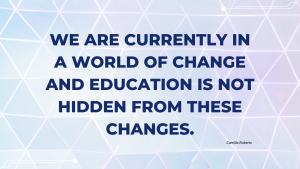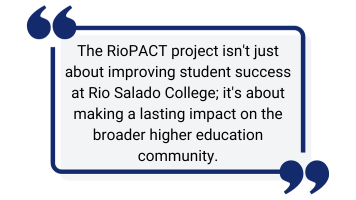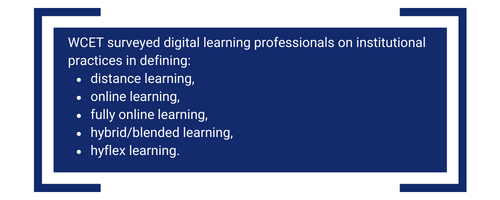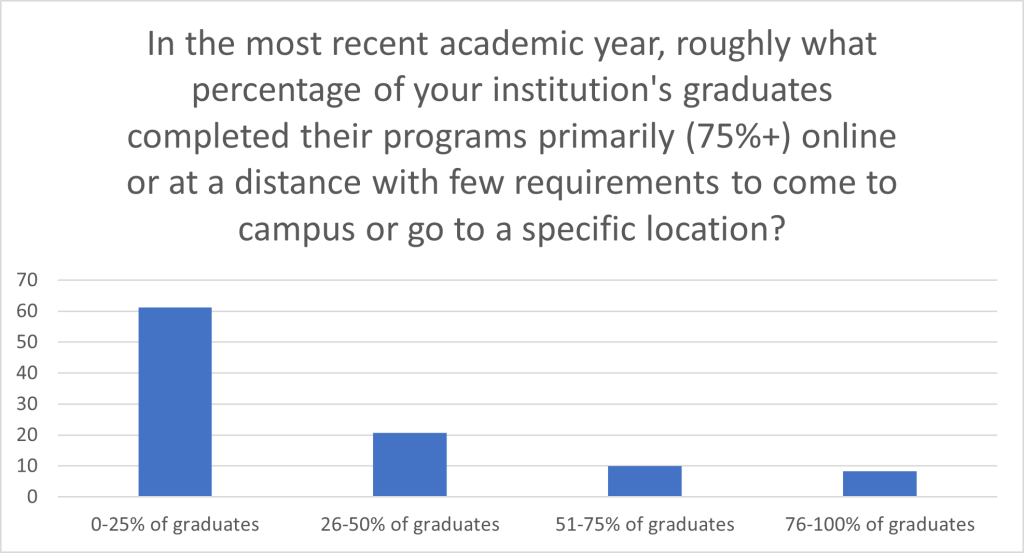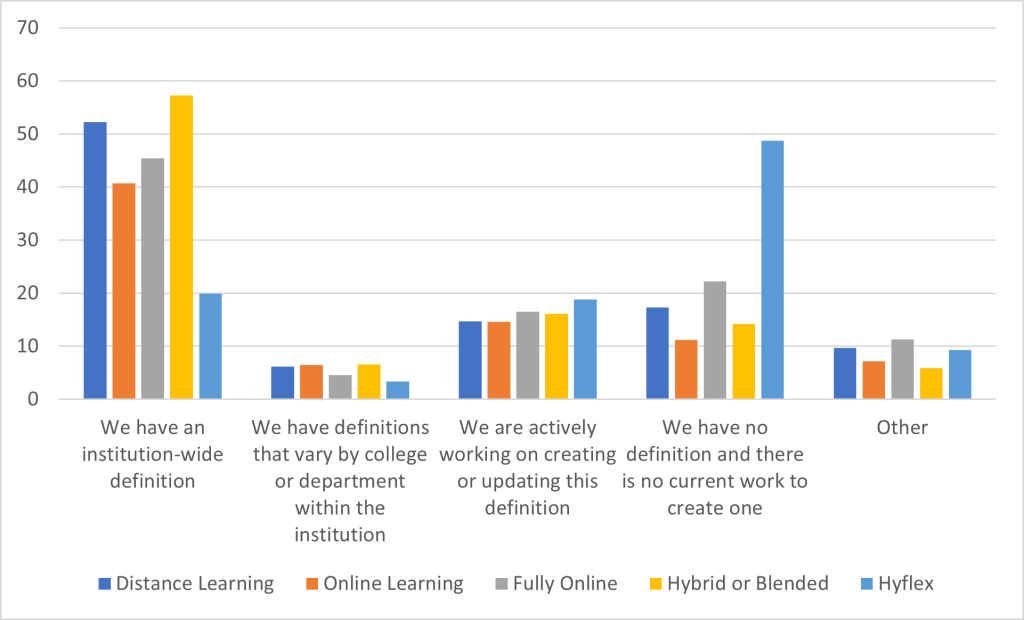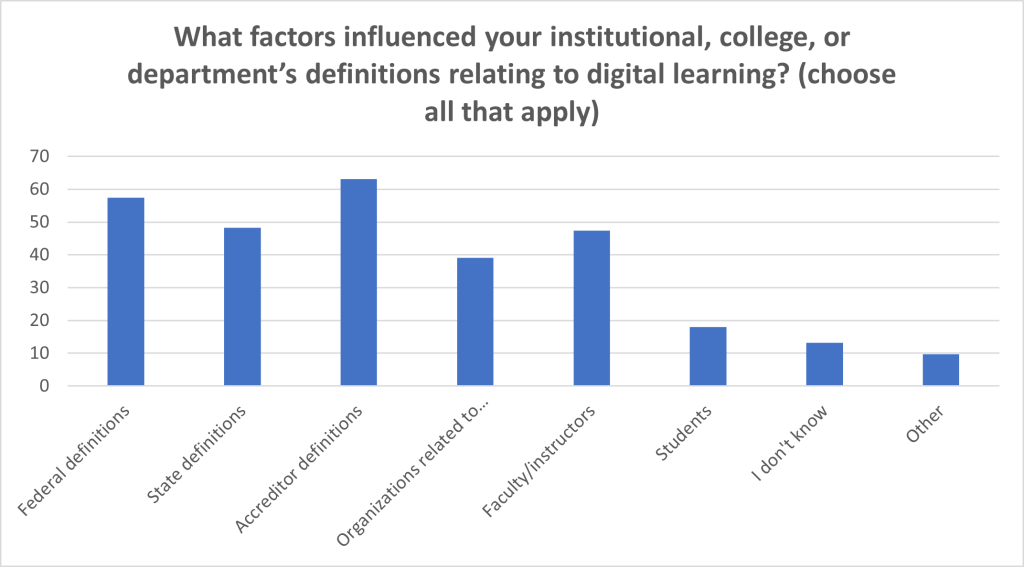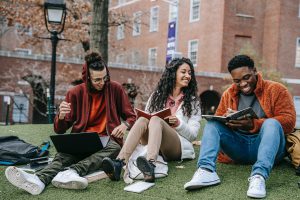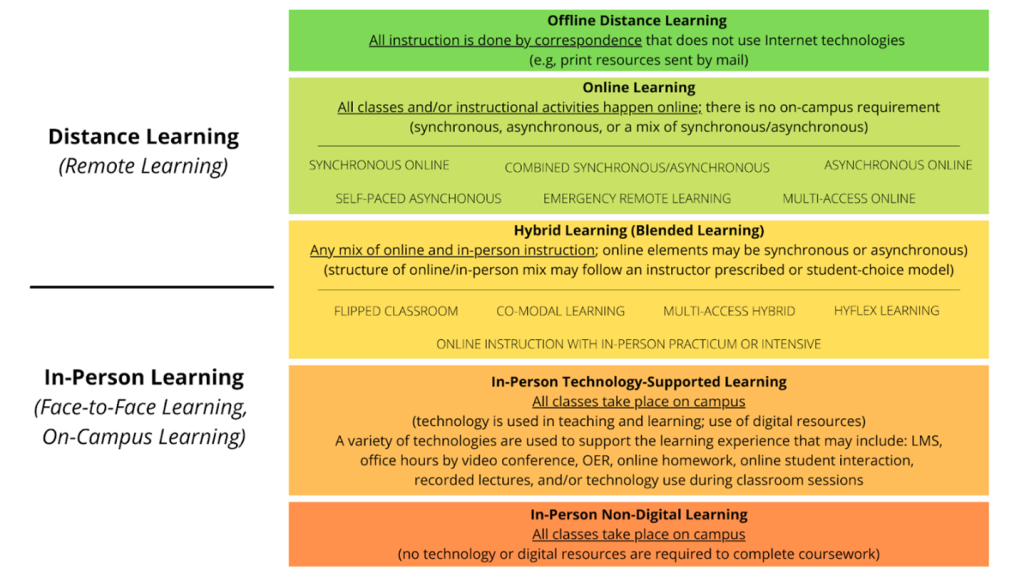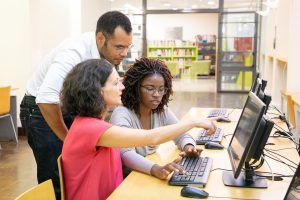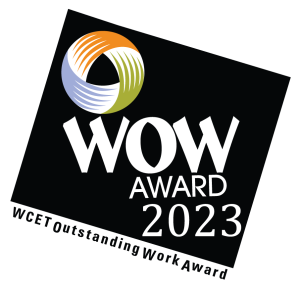
Today we continue the 2023 WOW Awards series here on Frontiers!
If you missed the first post in our series, check out the post about RIOPACT from Rio Salado College.
This week, we’re joined by Brad Griffith, Associate Vice Chancellor of Innovation with the Oklahoma State Regents for Higher Education. Brad outlines the history of the Online Consortium of Oklahoma and how this group collaborates within the state to impact student success. Thank you Brad for today’s great post!
Enjoy the read,
Lindsey Downs, WCET

The role of online learning in postsecondary education has never been more crucial. For our state, the Online Consortium of Oklahoma (OCO) has evolved from a grassroots initiative to a model of what can be achieved when institutions come together to address the challenges and opportunities of digital education. We are excited to dive into the key strategies and initiatives that have made OCO a success story, offering insights that could benefit other state systems of higher education or similar member-driven consortia.
OCO’s Grassroots
Founded in 2018, OCO was established to foster collaboration and innovation in online learning across Oklahoma. The consortium now collaborates with 26 member institutions, each contributing its unique strengths to create a robust and diverse body of resources and expertise. The collective aim is to enable all member institutions to provide high-quality, accessible, and flexible educational opportunities for students across the state.
Key Initiatives and Innovations
- Council for Online Learning Excellence (COLE) – COLE consists of over 125 volunteer members serving across seven subcommittees dedicated to fostering professional development, learning innovations, and pathways to student success. OCO works in collaboration with COLE to constantly serve those teaching and supporting online learners, including through regular awarding of grant funding for special projects upon request by committees.
- Low-Cost and No-Cost Professional Development – OCO prioritizes the upskilling of faculty and staff through affordable professional development programs. This ensures that educators are well-equipped to deliver top-notch online instruction.
- Technology and Project Pilots – OCO has offered grant funds to its member institutions to pilot new and innovative learning technologies in addition to serving as the initial incubator for projects, including those focused on Open Educational Resources (OER), which have secured ongoing funding support from the State Regents.
- Group Purchasing for Technology – By leveraging the collective bargaining power of its members, OCO has been able to secure cost-effective deals on essential educational technology, passing the savings onto students.
- Collaborative User Groups – OCO facilitates the creation of user groups focused on common online learning platforms and student success initiatives. These groups serve as think tanks for sharing best practices and troubleshooting challenges.
- Annual Summits – OCO supports our system’s annual OER Summit and Learning Innovations Summit hybrid events, which offer a platform for educators, administrators, and other stakeholders to share insights, discuss trends, and explore new opportunities in online education.
Check Out Our Resources at OCOlearnOK.org
In September 2020, OCO, in collaboration with the Oklahoma State Regents for Higher Education, launched OCOlearnOK.org. This platform serves as a one-stop-shop for resources related to online education, including OER, digital accessibility guides, and an extensive library of on-demand webinars. It also features a calendar of upcoming professional development events and new digital credentialing opportunities.
The Role of Leadership
OCO’s membership dues enabled the State Regents to hire a full-time staff member to serve the consortium in October 2019. Support from the state level has been essential for the success of the Consortium, particularly in communication of the value of online learning to key stakeholders. In July 2023, OSRHE established a new Associate Vice Chancellor of Innovation position. In this role and with my team, we are responsible for helping the consortium set and achieve its goals. The vision and commitment of OCO’s members have accelerated the quality, capacity, and scope of online learning in Oklahoma.
Lessons for Other Consortia

- Collaboration is Key – The power of collective effort cannot be overstated. Pooling resources and expertise, particularly among institutions of diverse sizes and student demographics, leads to more significant impact.
- Stay Adaptable – The landscape of online education is constantly changing. Being flexible and open to new technologies and methodologies is essential.
- Invest in Professional Development – Well-trained faculty and professional staff are the backbone of any successful online program. Develop expertise from within your own collaborative and support those new to their roles at institutions across your network.
- Engage Stakeholders – Regular communication with all stakeholders, including regents, legislators, presidents, academic and technology officers, faculty, administrators, and students, ensures that everyone is aligned with the consortium’s goals and aware of its progress.
Conclusion
The Online Consortium of Oklahoma serves as an adaptable model of what can be achieved through collaborative effort and visionary leadership. As we continue to innovate and expand, we are deeply honored to have been recognized by the WCET community with the 2023 Outstanding Work Award. This accolade holds special significance for us, coming from a community that has been instrumental in supporting our journey toward achieving the outcomes described in this post. We extend our heartfelt gratitude to WCET and its members for this recognition and for their ongoing commitment to advancing the quality and reach of digital learning programs. Together, we continue to define new benchmarks and create transformative educational experiences for every learner.



